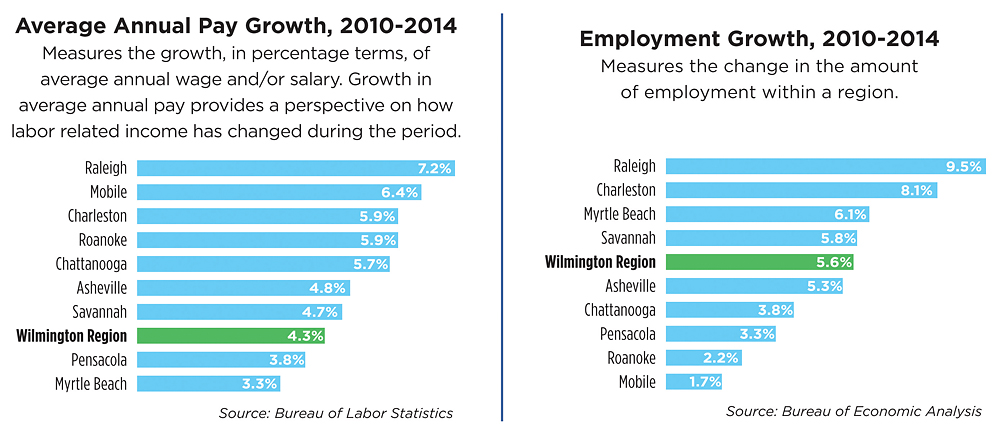The Wilmington regional economy is growing, but so is the population, resulting in a level of economic activity that a new report describes as “moderate” and “steady.”
In unveiling the Wilmington Regional Economic Scorecard study on Tuesday, the Wilmington Chamber of Commerce seeks to identify areas where economic activity can be improved and highlight the strengths of the local economy as it seeks to expand business in the area.
“We have a good story to tell,” said chamber president Connie Majure-Rhett. “But there are areas where we need improvement.”
One area of strength for the regional economy also serves as a weakness: small business growth. The report shows that the entrepreneurial activity in New Hanover, Pender and Brunswick counties is strong, but also that these businesses often don’t bring in a significant amount of money from outside of the area, which is a key factor for economic growth.
“We have a lot of risk takers in this community, a lot of people who are willing to give it a go,” said Dr. Adam Jones, a regional economist at the University of North Carolina Wilmington. “But what we lack are business support services.”
This data shows that many of these small businesses are service-based ventures that will likely only ever employ a handful of people, the report said. The Wilmington area does better than even the top cities it compares itself against in the report — Charleston and Raleigh — in creating small companies, but the low number of financial and consulting support services to boost these businesses shows that growth is likely to be limited.
In compiling the report, the chamber, through its Cape Fear Future initiative, analyzed five key economic factors and compared them with nine other cities in the region, including its “aspirational” cities of Charleston and Raleigh, which represented the goal of where to take the regional economy.
In addition to scoring higher than any other city on the Entrepreneurial Environment Index that represents small business growth, the Wilmington region also had high marks for the Quality of Place Index, coming in right behind only Asheville, North Carolina, when measuring for things like crime rates, traffic, healthcare and recreational opportunities.
The region also scored well on the Human Capital Index, outpacing places like Roanoke, Virginia, Savannah, Georgia, Chattanooga, Tennessee and Pensacola, Florida in factors like workers in specialized fields and high school and college graduates.
The region also had fair marks on the Innovative Activity Index, which represented work in sciences and technological development and can help be marked by grant funding. Other than Raleigh, with its proximity to the research triangle, Wilmington outpaced the other regional cities to which it was measured.
But where Wilmington showed noticeable weakness was in the Traded Sector Employment Index, which represents manufacturing and production that can be sold outside of the region. It beat only Pensacola, Florida, and Myrtle Beach, South Carolina, in this index, and has even been losing ground since 2010. These “traded sector” industries can include tourism, transportation, business and financial services and e-commerce and tend to pay more than the average local salary.
What makes matters worse, the report’s authors said at a conference on Tuesday morning, is that one of Wilmington’s leading traded sector industries — film production — was at risk due to factors beyond the control of local leaders, referencing cuts in film production grants from the state’s legislature.
And while the region’s average income was growing, wages in the Wilmington region remained generally lower than other cities, which is largely a reflection of retirees moving into the area.
email [email protected]




